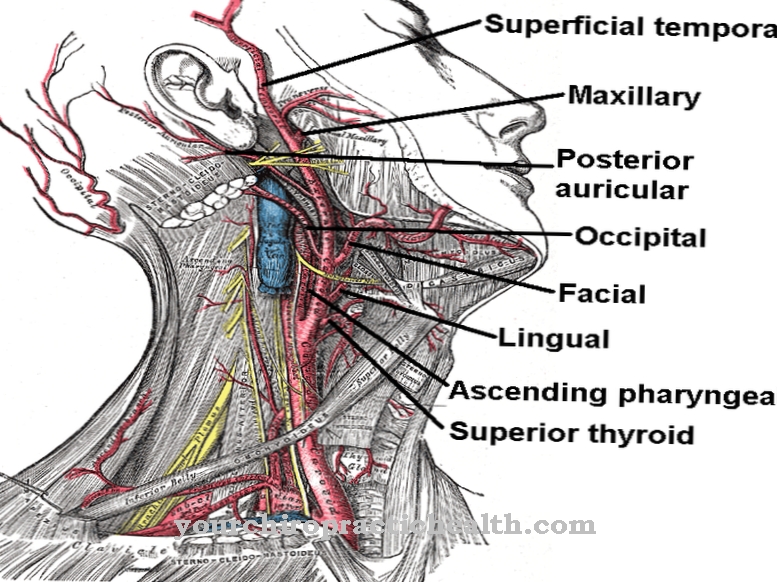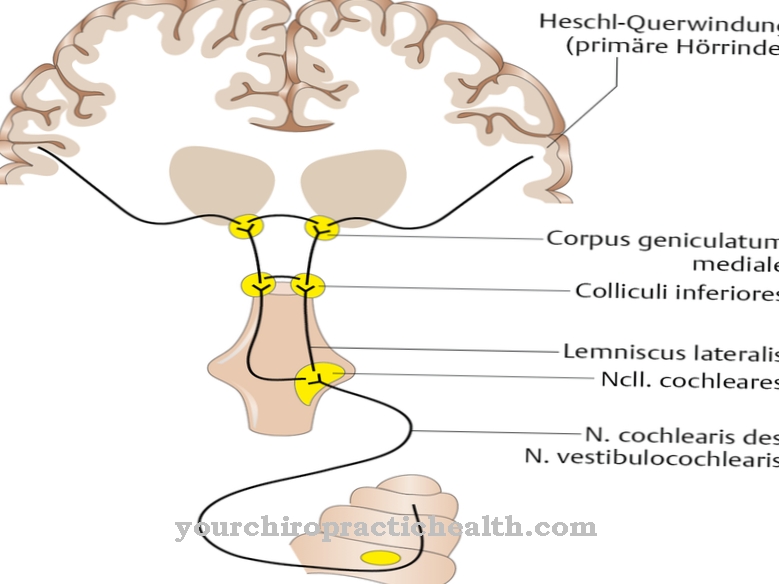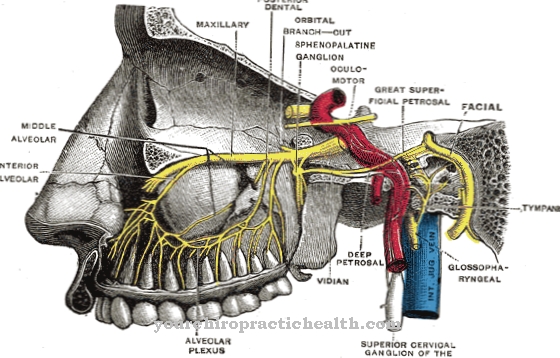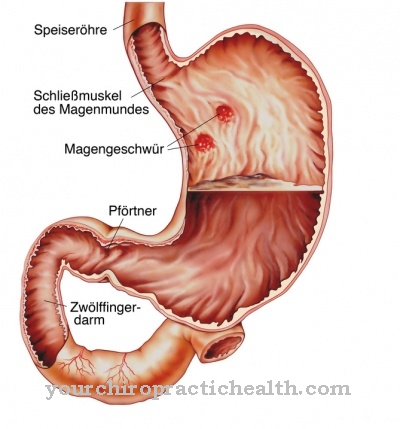The Auditory ossicles lie in the middle ear and serve to transmit mechanical vibrations.
What are the ossicles?
The ossicles, Latin as Ossicula auditūs are made of tiny bones that lie in the middle ear and are responsible for transmitting mechanical vibrations to the inner ear. In the human ear, the term ossicles refers to ossicles such as the stapes, the hammer and the anvil. The ossicle, the tympanic cavity, is an air-filled space behind the eardrum in which the ossicles lie.
Anatomy & structure
The auditory ossicles are one of the smallest bones in humans and connect the outer ear to the inner ear. They only weigh a few grams. The hammer weighs about 23 milligrams, the anvil 27 milligrams and the stapes only 2.5 milligrams. The ossicles are very articulated and interconnected.
They are attached via the ligamentous apparatus, which is located in the cavity of the middle ear. The mucous membrane of the middle ear covers the ossicles. The name of anvil, stirrup and hammer is derived from the shape of the ossicles that lie between the eardrum and the inner ear in the following order: hammer, anvil, stirrup. The hammer lies partly embedded in the eardrum.
This transfers the vibrations from the eardrum to the other ossicles. The scientific name for the hammer is malleus, for the incus incus and the stirrup is called stapes. The hammer is fused with the eardrum via a hammer handle and is connected to the anvil via the hammer head. The anvil in turn forms an anvil-stapes joint with the so-called stapes head.
Function & tasks
The auditory ossicles are very different from the other bones in the human body. They contain not only lamellar bones, but also cartilage, braided bones and strand bones. The strand bone is understood to be an embryonically formed bone substance in which the collagen fibrils intertwine to form strands like hair. The ossification of the hammer begins in the fetus in the fourth month and is almost completely completed in the seventh month.
The anvil, which arises from the first gill arch, also forms towards the end of the fifth month. The stapes ossify towards the end of the fourth month and ossify around the end of the eighth month. At birth, the ossicles are then in the state of fully grown, completely ossified bones. The purpose of the small ossicles is to couple the corresponding vibrations emanating from the eardrum as well as possible to the inner ear and to protect the inner ear from loud sound pressure. They therefore function as impedance converters at the oval window with the eardrum and atrial membrane, because a low sound pressure in front of the eardrum is converted into high pressure at the oval window of the inner ear.
That is, the conversion of the acoustic vibrations in the ear canal are converted into mechanical vibrations by the ossicles in fluid vibrations. Since the eardrum is not permanently connected to the oval window, this has a positive effect on the ear. Otherwise, the transmission of the sound would be around 30 decibels lower and quiet noises would hardly be perceived. The ossicles also have an important protective function. Two small muscles change the degree of deflection of the ossicles. A muscle attaches to the hammer and tightens the eardrum, and it also protects against excessive movements of the ossicles and eardrum, such as when sneezing. The second muscle, which attaches to the stapes, protects the very sensitive hair cells in the inner ear from excessive sound pressure.
Diseases
Otosclerosis leads to a pathological hardening of the membrane and leads to increasing hearing loss due to a severe impairment of the transmission of the vibrations from the ossicular chain to the inner ear. Triggers can be diseases such as measles or mumps, but also inflammatory diseases or autoimmune processes in the body.
This process can be stopped by a microsurgical intervention in which the almost immobile stapes are replaced by a so-called stapes prosthesis, an artificial stirrup. 20 percent of Germans already suffer from hearing loss. The proportion of men older than 65 years who are hard of hearing reaches more than 50 percent. The cause of hearing loss is often a disease of the inner or middle ear. Disorders of the auditory ossicles or the eardrum promote hearing loss.
Hearing-enhancing operations can improve the quality of life as well as the hearing of those affected. The smallest instruments, which are barely a millimeter in diameter, support interventions in which tumors and inflammation in the middle ear are removed, but also parts of an ear that have already been destroyed are built up, such as a reconstruction of the eardrum.
Thanks to today's medicine, it is even possible to replace a lost eardrum and insert it with grafts from muscle and cartilage tissue. It is also possible to build up auditory ossicles that have already been destroyed. Mastoiditis, a complication of an otitis media that has not completely healed, is rather rare today due to the administration of antibiotics. However, it can have a negative impact on the sound conduction and sound amplification function of the middle ear and promote hearing loss.
The inflammation can lead to uncomfortable impairments such as dizziness or meningitis. In the event of any problems or the vague suspicion of a feeling of deteriorating hearing, it is important to consult an ENT specialist and to clarify this. If otosclerosis progresses, if left untreated, it can lead to deafness in the worst case. Impairments from tinnitus are also possible.
You can find your medication here
➔ Medicines for earache and inflammationTypical & common ear diseases
- Eardrum injuries
- Ear flow (otorrhea)
- Otitis media
- Ear canal inflammation
- Mastoiditis
- Ear furuncle













.jpg)

.jpg)
.jpg)











.jpg)